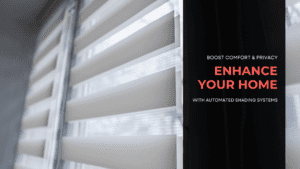Key Highlights
- Enhance your home’s curb appeal with an outdoor lighting setup.
- Learn to safely install and troubleshoot a low-voltage system.
- Discover the tools and materials needed for landscape lighting.
- Follow our comprehensive guide, from planning to final adjustments.
- Avoid common pitfalls with our expert tips and tricks.
- Enjoy a beautifully illuminated landscape for years to come.
Overview
Outdoor lighting can transform your home’s exterior, and with a well-planned landscape lighting system, you can achieve stunning results. This comprehensive guide provides a step-by-step approach to installing low-voltage landscape lighting, empowering you to create a safe and enchanting ambiance.
From understanding the basics to troubleshooting common problems, this tutorial will equip you with the knowledge and confidence to illuminate your outdoor space beautifully.
Furthermore, discover how Boston Automations’ luxury landscape lighting solutions pair handcrafted fixtures with designer finishes to showcase your hardscape and plantings in stunning evening detail.
Understanding the Basics of Landscape Lighting

Landscape lighting serves both aesthetic and practical purposes, enhancing your home’s beauty while increasing safety and security. Low-voltage systems, utilizing a transformer to reduce voltage, are popular for DIY installations due to their ease of use and safety.
Before embarking on your project, it’s essential to understand the basic components of a landscape lighting setup. These include light fixtures, a transformer, low-voltage cable, and connectors. By understanding the role each element plays, you’ll be better prepared for a successful installation.
The Role of Landscape Lighting in Outdoor Spaces
Landscape lighting extends beyond mere illumination; it’s an art form that adds dimension, character, and a touch of magic to your outdoor living areas. Strategically placed lights can have a huge impact, subtly drawing attention to architectural features, highlighting prized plants, and creating inviting walkways.
Imagine your trees bathed in a warm, inviting glow, their majestic branches reaching towards the night sky. Or your garden paths, illuminated by soft, subtle lighting, guiding guests through a mesmerizing nighttime landscape.
Effective outdoor lighting transforms your property into a captivating oasis, extending the enjoyment of your outdoor spaces well into the night.
Types of Landscape Lighting Fixtures and Their Uses
Choosing the right light fixture for each area is crucial in creating a cohesive and visually appealing landscape lighting scheme. With a variety of options available, each serving a unique purpose, you can create a layered and dynamic lighting design.
Here are some popular light fixture types and their uses:
- Path lights: As the name suggests, path lights illuminate walkways, increasing safety and visibility while adding a charming ambiance to your pathways.
- Spotlights: Ideal for highlighting focal points in your landscape design, spotlights can be directed to showcase statues, trees, or interesting textures.
- Flood lights: These provide broader illumination, ideal for security purposes or for casting a wide beam of light on larger landscape features.
By strategically combining these different light fixture types, you can create a layered and dynamic outdoor lighting design that complements and enhances your landscaping.
Preparing for Your Landscape Lighting Project
Adequate preparation sets the foundation for a smooth and successful installation process. Before you begin, it’s vital to gather all the necessary tools and materials, ensuring you have everything at hand.
Additionally, prioritizing safety by understanding and adhering to local electrical codes and guidelines is crucial for preventing accidents and ensuring a code-compliant installation.
Listing Essential Tools and Equipment
Having the right tools and equipment on hand simplifies the installation process, preventing unnecessary delays and frustrations. Before you get started, make sure you have the following:
Essential tools:
- Wire strippers: Used for stripping the insulation off the gauge wire, exposing the conductors for making connections.
- Shovel or trenching tool: Needed for digging trenches to bury the low-voltage cable, protecting it from damage.
- Power drill: Useful for installing light fixtures onto hard surfaces like decks or walls.
Having these readily available ensures a smoother workflow, allowing you to focus on the task at hand and complete the installation efficiently.
Safety Measures and Considerations
While low-voltage landscape lighting systems pose a lower risk of electrical shock, prioritizing safety throughout the installation process is crucial. Familiarize yourself with both the National Electrical Code® (NEC) and local codes to ensure a safe and code-compliant installation.
Always turn off the power at the electrical outlet before working on any part of the lighting system. When handling electrical wiring, wear appropriate safety gear, including gloves and safety glasses.
Remembering these essential safety measures protects you and ensures a secure and properly functioning landscape lighting system.
A Beginner’s Guide to Wiring Landscape Lighting

Now that you understand the basics and have gathered the necessary tools and safety knowledge, it’s time to start wiring your landscape lighting. Following these steps in order will ensure a successful installation and help you avoid common pitfalls.
Remember to take your time and double-check your connections throughout the process for optimal performance and longevity of your lighting system.
Step 1: Planning Your Lighting Layout
Before you begin digging or running cables, it’s crucial to create a detailed landscape lighting design plan. Start by sketching a layout of your property, including existing features like walkways, trees, and structures.
Next, determine the focal points you want to highlight and the areas that need functional illumination, such as pathways. Consider the desired ambiance for different sections – for instance, soft lighting for seating areas and brighter illumination for walkways.
By carefully planning your layout, you’ll minimize the need for adjustments later and achieve a cohesive and well-designed lighting scheme that complements your landscape.
Step 2: Selecting the Right Transformer
The transformer is the heart of your low-voltage lighting system, converting standard household voltage (120 volts) to a safer 12 volts for landscape lights. Choosing the correct transformer size is crucial to ensure adequate power without overloading the system.
Calculate the total wattage of all the lights you plan to install, then add a buffer of 20-25% for potential future additions. For instance, if your lights use a total of 100 watts, choose a transformer with a capacity of 120-125 watts.
Installing the low voltage transformer in a central, accessible location simplifies wiring and potential troubleshooting in the future.
Step 3: Running the Low-Voltage Cable
With the transformer installed, it’s time to run the low voltage cable to each light fixture location. To prevent voltage drop, which causes lights to dim, use the correct gauge wire for the distance and wattage of your system.
Start at the transformer and lay the cable along your planned routes, following natural lines in your landscaping to minimize visibility. Use landscaping staples to secure the cable to the ground every few feet.
Leave a few extra feet of cable at each fixture location for easy connections and adjustments. Once all cables are run, you can begin connecting your lights.
Step 4: Connecting the Lights
With the low voltage cable in place, it’s time to make the wire connections to your light fixtures. Use waterproof wire connectors specifically designed for outdoor use to prevent corrosion and ensure a secure connection.
Start by stripping approximately ½ inch of insulation from the ends of the low-voltage cable and the wires extending from the light fixture. Next, insert the stripped wires into the connector, ensuring proper polarity (matching positive to positive and negative to negative).
Securely twist or crimp the connector according to the manufacturer’s instructions, creating a tight and waterproof seal. Repeat this process for each light fixture in your system.
Step 5: Adjusting and Testing the Setup
Once all your light fixtures are connected, it’s time to test your newly installed landscape lighting system. Before burying any cables or making final adjustments, turn on the power to the transformer and check that all lights are illuminated.
Carefully inspect each connection for any signs of flickering or dimming, which could indicate a loose connection or voltage drop. If you encounter any issues, double-check your wiring and make sure the connectors are secure.
After confirming that all lights are working correctly, fine-tune the positioning and aim of each fixture to achieve your desired lighting effects.
After wiring your fixtures, configuring the schedule is key—our step-by-step guide to setting your landscape light timer walks through exact timer programming for consistent after-dark illumination.
Troubleshooting Common Landscape Lighting Issues
Even with careful planning and installation, occasional issues may arise with your landscape lighting system. Understanding common problems and how to troubleshoot them effectively ensures a long-lasting and enjoyable outdoor lighting experience.
Let’s explore solutions for two frequent issues: non-functional lights and cable or connection problems.
Dealing With Non-Functional Lights
Discovering a non-functional light in your beautifully illuminated landscape can be frustrating. Before assuming the worst, there are a few troubleshooting steps you can take to identify the source of the problem.
First, check the bulb itself. If you’re using traditional incandescent bulbs, try replacing it with a new one. However, if you’ve opted for energy-efficient LEDs, it’s less likely the bulb is faulty.
Next, inspect the wire connections at the fixture and the connector leading to the main cable. A loose or corroded connection can interrupt the flow of electricity, preventing the light from illuminating. If you discover a loose connection, tighten it securely.
Fixing Cable and Connection Problems
Cable and connection issues are often the culprits behind malfunctioning landscape lights. If troubleshooting individual lights doesn’t resolve the problem, carefully examine the low-voltage cable running through your landscape.
Look for any signs of physical damage, such as cuts or abrasions, that could be disrupting the electrical flow. Additionally, check for loose connections at the transformer and any junction points where multiple cables connect.
If you discover damage to the cable, it’s essential to replace the affected section to ensure proper functionality and safety. When making repairs, always use waterproof connectors and ensure a tight seal to prevent future connection issues.
For advanced control and scene-setting beyond basic wiring, our ultimate guide to intelligent lighting systems covers sensor integration, app-based scheduling, and automated brightness adjustments.
Elevate Your Space!
Enhance your outdoor ambiance with the art of landscape lighting. By understanding the basics and following a structured approach, you can effortlessly illuminate your space.
From planning and selecting the right fixtures to wiring and troubleshooting, this step-by-step guide equips you with the knowledge for a successful lighting project. Let your creativity shine as you transform your outdoor area into a mesmerizing oasis.
Need further assistance or expert advice? Get in touch with us to illuminate your landscape elegantly.
Frequently Asked Questions
Can LED bulbs be used in any landscape lighting fixture?
While LEDs are known for their energy efficiency and long lifespans, checking the compatibility of LED bulbs with your specific light fixture is essential. Ensure the bulb’s wattage and lumens meet the fixture’s requirements for optimal performance.




